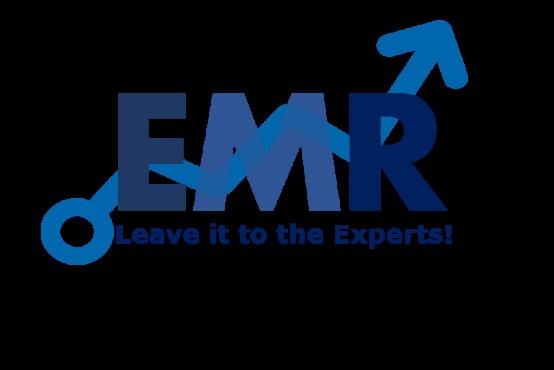






Claight Corporation is the literal incorporation of clarity and insights. We have one principal objective for our clientsGrowth! With our robust plan of action, a team of seasoned insight analysts, and experienced consultants, we deliver Success!
Dedicated Team: 400+
Our team, with its diverse backgrounds and expertise, is dedicated to providing clients with high-quality, actionable insights.
Competent Experts: 3000+
Our panel of consultants know where you are exactly stuck and what should be the right strategy for you to get that pullback off your back!
Industry Reports: 10000+
Our reports are fueled by vast databases covering an array of industries. We provide insights backed by the latest, most relevant data.
Industry Domains: 15+
With our deep-rooted expertise and extensive experience, we craft market research solutions specifically designed for your industry's needs.




The Europe cement market was valued at approximately 176.58 million metric tons (MMT) in 2024. It is projected to grow at a compound annual growth rate (CAGR) of 1.90% during the forecast period from 2025 to 2034.
The Europe cement market is experiencing gradual yet steady growth, driven by the region's ongoing demand for construction and infrastructure development. As urbanization continues across Europe, the need for durable building materials such as cement remains strong, particularly in residential, commercial, and industrial construction. Additionally, government initiatives focused on urban renewal, sustainability, and the expansion of transportation networks are fueling demand for cement products, as they are essential for large-scale infrastructure projects.
This is a sample text.
Environmental sustainability has become a major focus in the European cement market, with companies increasingly adopting greener manufacturing processes. Innovations in cement production, such as the development of low-carbon and eco-friendly alternatives, are gaining traction. This is partly driven by stricter environmental regulations and a shift toward more sustainable building practices. As Europe continues to prioritize reducing its carbon footprint, cement manufacturers are investing in technologies and processes that minimize emissions while maintaining product performance.
Another factor contributing to the growth of the cement market in Europe is the rising demand for renovation and retrofitting of older buildings. Many European cities are looking to upgrade their infrastructure, addressing the needs of aging buildings while enhancing energy efficiency and safety standards. This trend is expected to persist, further boosting the demand for cement as the material plays a key role in the maintenance and enhancement of existing structures. As the construction sector evolves, cement manufacturers will continue to innovate, ensuring that their products meet the changing needs of the market.

The Europe cement market is currently experiencing steady growth, driven by ongoing urbanization and infrastructure development across the region. As demand for residential, commercial, and industrial buildings continues to rise, cement remains a key component in construction projects. Additionally, the increasing focus on sustainability and eco-friendly construction methods is leading to a growing interest in green cement and alternative building materials, which has spurred innovation in the industry. Companies are investing in sustainable production techniques and low-carbon technologies to align with regional environmental regulations and meet consumer preferences for more environmentally responsible options.
This is a sample text.
In the coming years, the European cement market is expected to benefit from the expansion of infrastructure projects, particularly in emerging economies within the region. Governments are increasing investments in transport, energy, and public infrastructure to boost economic growth, which in turn is driving the demand for cement. Furthermore, the rise in renovation and refurbishment activities across Europe, driven by aging infrastructure, will also contribute to the market's growth. This trend is particularly noticeable in countries with established industrial bases, where there is a greater need to maintain and upgrade older buildings and structures.
The European cement market is also witnessing shifts in consumer preferences, with a growing demand for more durable and high-performance products. Manufacturers are focusing on improving cement formulations to offer better strength, quicker setting times, and enhanced durability in challenging conditions. As digitalization and smart construction practices become more prevalent, the cement industry is exploring the integration of advanced technologies such as automation, 3D printing, and data analytics to streamline production and optimize supply chains. These technological advancements are likely to reshape the competitive landscape and create new opportunities for growth in the market.

Based On the End Use:
• Residential
• Commercial/Institutional/Industrial
• Infrastructural
Based on the Region:
• Germany • United Kingdom • France
Italy • Spain • Switzerland
Poland • Netherlands • Others

This is a sample text.
The report provides an in-depth analysis of the key players in the Europe cement market, examining their competitive landscape, production capacity, and recent developments such as mergers, acquisitions, investments, capacity expansions, and plant upgrades.
Holcim Ltd.
Holcim Ltd. is a global leader in the production of cement, aggregates, and ready-mix concrete, with a strong presence in Europe. The company focuses on sustainable construction solutions and innovative technologies to reduce carbon emissions. Holcim is known for its extensive product portfolio and commitment to environmental sustainability.
HeidelbergCement AG is one of the world’s largest building materials companies, specializing in cement, aggregates, and ready-mix concrete. The company has a strong foothold in Europe, with an emphasis on high-quality products and sustainability. HeidelbergCement has been actively pursuing innovations in low-carbon products and digitalization.
CRH plc
CRH plc is an international leader in building materials, providing cement, aggregates, and other construction solutions across Europe and North America. Known for its diverse portfolio and customer-centric approach, CRH focuses on sustainable construction practices and strategic acquisitions to strengthen its market position.

The report provides an in-depth analysis of the key players in the Europe cement market, examining their competitive landscape, production capacity, and recent developments such as mergers, acquisitions, investments, capacity expansions, and plant upgrades.
Vicat Group, a French multinational, produces cement, ready-mix concrete, and aggregates. With operations across Europe and other regions, Vicat is committed to producing innovative and sustainable building materials. The company emphasizes environmentally friendly practices and technological advancements in cement production.
Buzzi Unicem SpA is an Italian multinational company specializing in cement, ready-mix concrete, and aggregates. It operates in Europe, North America, and other international markets, with a focus on sustainability and efficient production processes. Buzzi Unicem is known for its strong market presence and commitment to innovation.
CEMEX is a global building materials company based in Mexico, with significant operations in Europe, producing cement, ready-mix concrete, and aggregates. Known for its innovation and commitment to sustainable construction, CEMEX is actively involved in low-carbon initiatives and expanding its digital services for the construction industry.


01 Executive Summary
1.1 Market Size 2024-2025
1.2 Market Growth 2025(F)-2034(F)
1.3 Key Demand Drivers
1.4 Key Players and Competitive Structure
1.5 Industry Best Practices
1.6 Recent Trends and Developments
1.7 Industry Outlook
02 Market Overview and Stakeholder Insights
2.1 Market Trends
2.2 Key Verticals
2.3 Key Countries
2.4 Supplier Power
2.5 Buyer Power
2.6 Key Market Opportunities and Risks
2.7 Key Initiatives by Stakeholders
03 Economic Summary
3.1 GDP Outlook
3.2 GDP Per Capita Growth
3.3 Inflation Trends
3.4 Democracy Index

3.5 Gross Public Debt Ratios
3.6 Balance of Payment (BoP) Position
3.7 Population Outlook
3.8 Urbanisation Trends
04 Country Risk Profiles
4.1 Country Risk
4.2 Business Climate
05 Global Cement Market Overview
5.1 Key Industry Highlights
5.2 Global Cement Historical Production (2018-2024)
5.3 Global Cement Production Forecast (2025-2034)
5.4 Global Cement Historical Consumption (2018-2024)
5.5 Global Cement Consumption Forecast (2025-2034)
06 Europe Cement Market Analysis
6.1 Key Industry Highlights
6.2 Europe Cement Historical Production (2018-2024)
6.3 Europe Cement Production Forecast (2025-2034)
6.4 Europe Cement Historical Consumption (2018-2024)
6.5 Europe Cement Consumption Forecast (2025-2034)
6.6 Europe Cement Market by End Use
6.6.1 Residential

6.6.1.1 Historical Trend (2018-2024)
6.6.1.2 Forecast Trend (2025-2034)
6.6.2 Commercial/Institutional/Industrial
6.6.2.1 Historical Trend (2018-2024)
6.6.2.2 Forecast Trend (2025-2034)
6.6.3 Infrastructural
6.6.3.1 Historical Trend (2018-2024)
6.6.3.2 Forecast Trend (2025-2034)
6.7 Europe Cement Market by Region
6.7.1 Germany
6.7.2 United Kingdom
6.7.3 France
6.7.4 Italy
6.7.5 Spain
6.7.6 Switzerland
6.7.7 Poland
6.7.8 Netherlands
6.7.9 Others
07 Regional Analysis
7.1 Germany
7.1.1 Historical Production (2018-2024)

7.1.2 Production Forecast (2025-2034)
7.1.3 Historical Consumption (2018-2024)
7.1.4 Consumption Forecast (2025-2034)
7.2 United Kingdom
7.2.1 Historical Production (2018-2024)
7.2.2 Production Forecast (2025-2034)
7.2.3 Historical Consumption (2018-2024)
7.2.4 Consumption Forecast (2025-2034)
7.3 France
7.3.1 Historical Production (2018-2024)
7.3.2 Production Forecast (2025-2034)
7.3.3 Historical Consumption (2018-2024)
7.3.4 Consumption Forecast (2025-2034)
7.4 Italy
7.4.1 Historical Production (2018-2024)
7.4.2 Production Forecast (2025-2034)
7.4.3 Historical Consumption (2018-2024)
7.4.4 Consumption Forecast (2025-2034)
7.5 Spain
7.5.1 Historical Production (2018-2024)
7.5.2 Production Forecast (2025-2034)

7.5.3 Historical Consumption (2018-2024)
7.5.4 Consumption Forecast (2025-2034)
7.6 Switzerland
7.6.1 Historical Production (2018-2024)
7.6.2 Production Forecast (2025-2034)
7.6.3 Historical Consumption (2018-2024)
7.6.4 Consumption Forecast (2025-2034)
7.7 Poland
7.7.1 Historical Production (2018-2024)
7.7.2 Production Forecast (2025-2034)
7.7.3 Historical Consumption (2018-2024)
7.7.4 Consumption Forecast (2025-2034)
7.8 Netherlands
7.8.1 Historical Production (2018-2024)
7.8.2 Production Forecast (2025-2034)
7.8.3 Historical Consumption (2018-2024)
7.8.4 Consumption Forecast (2025-2034)
08 Market Dynamics
8.1 SWOT Analysis
8.1.1 Strengths
8.1.2 Weaknesses

8.1.3 Opportunities
8.1.4 Threats
8.2 Porter’s Five Forces Analysis
8.2.1 Supplier’s Power
8.2.2 Buyer’s Power
8.2.3 Threat of New Entrants
8.2.4 Degree of Rivalry
8.2.5 Threat of Substitutes
8.3 Key Indicators for Demand
8.4
11.1 Germany Historical Price Trends (2018-2024) and Forecast (2025-2034)
11.2 United Kingdom Historical Price Trends (2018-2024) and Forecast (2025-2034)

11.3 France Historical Price Trends (2018-2024) and Forecast (2025-2034)
11.4 Spain Historical Price Trends (2018-2024) and Forecast (2025-2034)
11.5 Italy Historical Price Trends (2018-2024) and Forecast (2025-2034)
11.6 Netherlands Historical Price Trends (2018-2024) and Forecast (2025-2034)
11.7 Switzerland Historical Price Trends (2018-2024) and Forecast (2025-2034)
11.8 Poland Historical Price Trends (2018-2024) and Forecast (2025-2034)
12 Transportation and Logistics
13 Impact of Environmental Policies
14 Regulatory Landscape
15 Cement and Concrete Industry Associations and Organisations
16 Competitive Landscape
16.1 Supplier Selection
16.2
16.3
16.4
16.5

16.5.2 HeidelbergCement AG
16.5.2.1 Company Overview
16.5.2.2 Product Portfolio
16.5.2.3 Demographic Reach and Achievements
16.5.2.4 Certifications
16.5.3 CRH plc
16.5.3.1 Company Overview
16.5.3.2 Product Portfolio
16.5.3.3 Demographic Reach and Achievements
16.5.3.4 Certifications
16.5.4 Vicat Group
16.5.4.1 Company Overview
16.5.4.2 Product Portfolio
16.5.4.3 Demographic Reach and Achievements
16.5.4.4 Certifications
16.5.5 Buzzi Unicem SpA.
16.5.5.1 Company Overview
16.5.5.2 Product Portfolio
16.5.5.3 Demographic Reach and Achievements
16.5.5.4 Certifications
16.5.6 CEMEX, S.A.B. de C.V

16.5.6.1 Company Overview
16.5.6.2 Product Portfolio
16.5.6.3 Demographic Reach and Achievements
16.5.6.4 Certifications
16.5.7 Titan Cement International S.A.
16.5.7.1 Company Overview
16.5.7.2 Product Portfolio
16.5.7.3 Demographic Reach and Achievements
16.5.7.4 Certifications
16.5.8 Cementir Holding N.V.
16.5.8.1 Company Overview
16.5.8.2 Product Portfolio
16.5.8.3 Demographic Reach and Achievements
16.5.8.4 Certifications
16.5.9 Others
Claight Corp. publishes market research reports on various industry verticals. All reports purchased via the website, email or over the phone are subject to the following disclaimer. A purchase automatically indicates acceptance of the disclaimer.
This is a sample text.
We, at EMR, gather information from various sources such as face-to- face interviews, paid databases, annual reports, surveys and media releases. This information is collated in good faith and used on an as is and as available basis by us.
Our reports should only be construed as guidance. We assert that any business or investment decisions should not be based purely on the information presented in our reports. We will not be responsible for any losses incurred by a client as a result of decisions made based on any information included in the reports.
We do not guarantee or take responsibility for the accuracy, completeness, reliability and usefulness of any information. In many cases, the opinion expressed in the reports is our current opinion based on the prevailing market trends and is subject to change.
The information provided by us is for the sole use of the authorised recipient(s). No part of the information or service may be duplicated or transmitted in any manner or by any medium without prior permission from EMR. Any such act will be considered as the breach of the ‘Terms & Conditions’ under which the report has been purchased.












https://www.expertmarketresearch.com
https://www.linkedin.com/company/expert-market-research
https://x.com/expertmresearch
https://www.facebook.com/expertmarketresearch
https://www.youtube.com/c/Expertmarketresearch https://expertmarketresearch-emr.blogspot.com
https://www.instagram.com/expertmarketresearch sales@expertmarketresearch.com